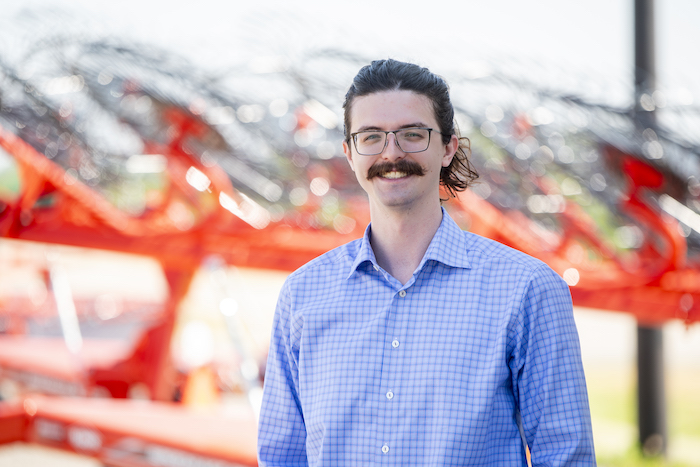For ag equipment dealers looking to add construction equipment to their business model, understanding a new equipment market can be tricky. Differing customer needs, new business cycles and the increased emphasis on rental are just a few differences ag equipment dealers will need to study before committing to the CE business.
George Russell, a founding member of the Machinery Advisors Consortium, spoke at the Associated Equipment Distributors’ (AED) 2023 Summit and highlighted key differences ag equipment dealers need to know when entering the construction equipment (CE) market.
1. Customers Need Less Technology
Russell explains the technology and customization needs of farmers are higher than that of the specialty or earthmoving CE customer, though the personal relationship element is equally as important.

“If you look at a relationship-oriented business like earth moving CE, you’ll have a strong relationship with those contractors who need a dozer or big wheel loader,” says Russell. “But how much technology is involved in a dozer that’s moving dirt? Not that much. You get into some of the specialty CE companies, you still have a relationship but with more engineering. But with farm equipment, we have both high technology and high relationship.
“The takeaway from this is: if you’re a farm equipment dealer, and you’re good at technology and relationships, you can sell in the construction markets because you already have the process and skills to make these things work together.”
2. Heavy CE Equipment Wears Out Parts Faster
Operating in the CE space will also mean dealers will be selling and servicing machines that burn through a higher dollar amount of parts per hour of usage than in agriculture. While cotton pickers generate the most at $20 in parts per hour, most heavy construction parts usage exceeds tractors and crop production equipment parts usage.

“If you look at the construction equipment, those heavy ground-engaging machines in heavy construction use a lot of parts and a lot of tools that wear parts,” says Russell. “You have lots of hours, and a lot of dollars per hour, which means the parts business on average is pretty lucrative for a construction equipment dealer.”
3. CE Parts Dollars to Labor Dollars Ratio is Strong
When examining what $1 of labor on a work order generates in parts sales, Russell says the CE industry generally gets $1 in parts back and that it’s creeping upward from there. The ag equipment industry, on the other hand, generally sees $0.75 back on every $1 of labor. Russell recalls when he was on the ag equipment dealer side of the business 40 years ago, this ratio was even.
“On the ag side, this ratio has gone down, and we track it with our ag dealer groups. It varies for two reasons typically,” he says. “One is when the equipment demand is high, you're doing a lot of set up and delivery. It doesn't require a lot of parts, but you’re using the labor to do the setup.
“But the most important thing, which is structural, is there’s more diagnostic time now with machines with a lot of technology on them. When you’re troubleshooting a machine, you’re not selling parts.”
4. Growing CE Revenue from ‘Rent-to-Rent’ Business
Looking at ag equipment [Fig. 1] and construction dealers’ [Fig. 2] gross profit mixes from 2007 to 2021, Russell illustrates the growing importance of “rent-to-rent” business, where construction dealers maintain construction equipment fleets solely for renting machines to multiple customers in a row. This differs from “rent-to-sell” income, where units are rented for the purpose of eventually selling them to the renter. Russell also points to the different cyclical nature of construction dealers’ gross profit.

“This doesn’t break out new and used sales for the CE dealers, because ag is a used business and CE is more a rental business,” says Russell. “You can see at the top of the bars [Fig. 2] a growing phenomenon of CE dealers being in the true ‘rent-to-rent’ business and the gross profit generated as a percent of the total.

“You also see the cyclicality in the CE market: the downturn in 2008-09, followed by steady growth. There’s a little blip in 2016, and then continued growth. Construction equipment is typically driven by overall development in the general economy.”







